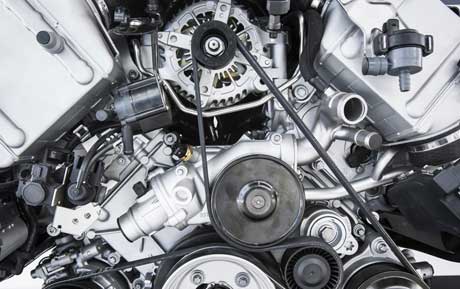
Belt Drives: An Overview of their Significance and Applications
Belt drives have been around for centuries, and they continue to play a vital role in various industries even today. In machinery, they are widely used to connect parallel shafts and transmit rotary motion from one shaft to the other. Belt drives are a cost-effective and efficient alternative to traditional gear systems and are commonly used in applications where high torque and speed control are essential. Ningbo Ramelman Transmission Technology Co., Ltd., a leading manufacturer of power transmission products in China, offers an extensive range of CE certified belt drives that includes Auto Timing Belts, Ribbed V Belts, Raw-edged V Belts, Automotive Timing Belts, Industrial Belts, Agricultural Belts, and Variable Speed Belts.
The Importance of Belt Drives
Belt drives are an essential component of modern machinery, and they play a crucial role in several industries, including agriculture, automotive, construction, manufacturing, and mining. Belt drives have several advantages over traditional gear systems, such as low maintenance, low noise level, and high efficiency. They are easy to install and can be customized to meet the specific needs of any application. Belt drives also offer a wide range of speed ratios and can transfer large amounts of power with relatively low tension.
Types of Belt Drives
There are several types of belt drives available on the market, each with its unique features and advantages. Some of the most common types of belt drives include flat belts, V-belts, timing belts, and ribbed belts.
Flat Belts: Flat belts are the simplest type of belt drive and consist of a flat, rectangular belt that runs on pulleys. They are primarily used in applications where low power transmission is required, such as in light-duty machinery.
V-belts: V-belts are the most commonly used type of belt drive and consist of a V-shaped belt running on pulleys with a V-shaped groove. They are used in applications where high power transmission is required, such as in heavy-duty machinery.
Timing Belts: Timing belts are used in applications that require precise rotation of the shafts, such as in automotive engines. They consist of a toothed belt running on pulleys with teeth cut into the groove.
Ribbed Belts: Ribbed belts are similar to V-belts, but they have a series of ribs on the underside of the belt that fit into a corresponding groove on the pulley. They are used in applications where high power transmission and compact design are required, such as in automotive engines.
Applications of Belt Drives
Belt drives are used in a wide range of applications across several industries, including agriculture, automotive, construction, manufacturing, and mining. Some of the most common applications of belt drives include:
Machine Tools: Belt drives are used in machine tools such as lathes and milling machines to transmit power from the motor to the tool spindle.
Conveyors: Belt drives are used in conveyor systems to move materials and products from one location to another.

Automotive: Belt drives are used in automotive engines to drive the alternator, water pump, and other accessories.
Agriculture: Belt drives are used in agricultural machinery such as tractors and combines to power the drive shafts and other components.
Conclusion
In conclusion, Belt drives are a crucial component of modern machinery, and they offer several advantages over traditional gear systems, such as low maintenance, low noise level, and high efficiency. Ningbo Ramelman Transmission Technology Co., Ltd. offers an extensive range of CE certified belt drives that cater to the needs of various industries. As the demand for energy-efficient and cost-effective power transmission systems continues to grow, belt drives are expected to play an increasingly critical role in meeting these needs.